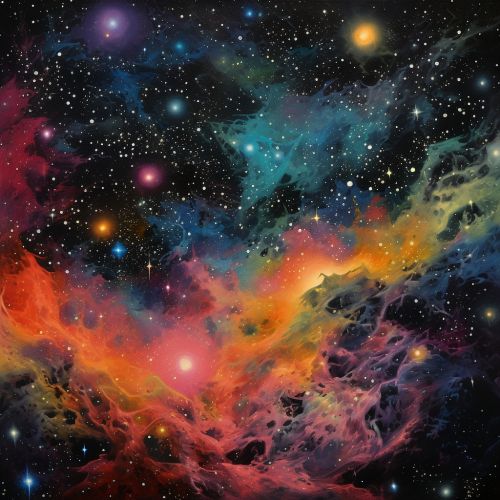Astrophysical Processes in Star Formation Regions
Introduction
The study of star formation is a fundamental aspect of astrophysics, involving a complex array of physical processes. These processes occur in regions of space known as star formation regions, where conditions are conducive to the birth of new stars.
Star Formation Regions
Star formation regions, also known as stellar nurseries, are areas in the universe where new stars are born. These regions are typically found within molecular clouds, which are dense concentrations of cold molecular gas and dust. The high density and low temperature of these clouds provide the ideal conditions for star formation to occur.


Processes in Star Formation Regions
There are several key astrophysical processes that occur within star formation regions, leading to the birth of new stars. These processes include gravitational collapse, fragmentation, and accretion.
Gravitational Collapse
The process of star formation begins with the gravitational collapse of a portion of a molecular cloud. Under the influence of gravity, the cloud begins to contract, leading to an increase in density and temperature. As the cloud continues to collapse, a dense core forms, which will eventually become a new star.
Fragmentation
As the cloud collapses, it may also undergo a process known as fragmentation. This process results in the formation of multiple dense cores within the cloud, each of which can potentially form a new star. Fragmentation is a key process in the formation of binary and multiple star systems.
Accretion
Once a dense core has formed, it begins to accumulate additional material from the surrounding cloud through a process known as accretion. This process leads to an increase in the mass of the core, eventually resulting in the birth of a new star.
Star Formation Feedback
The process of star formation also has significant effects on the surrounding environment, a phenomenon known as star formation feedback. This feedback can take several forms, including stellar winds, radiation pressure, and supernova explosions.
Stellar Winds
Newly formed stars often produce strong stellar winds, which can have significant effects on the surrounding molecular cloud. These winds can compress the cloud, triggering the formation of additional stars. They can also disperse the cloud, effectively halting further star formation.
Radiation Pressure
Radiation pressure from a newly formed star can also influence the surrounding environment. This pressure can compress the surrounding cloud, potentially triggering additional star formation. Alternatively, it can disperse the cloud, preventing further star formation.
Supernova Explosions
Finally, when a massive star reaches the end of its life, it can explode in a supernova. This explosion can have significant effects on the surrounding environment, including triggering the formation of new stars.
Conclusion
The study of astrophysical processes in star formation regions is a complex and fascinating field, offering insights into the birth, life, and death of stars. Through the study of these processes, astronomers can gain a deeper understanding of the universe and our place within it.
